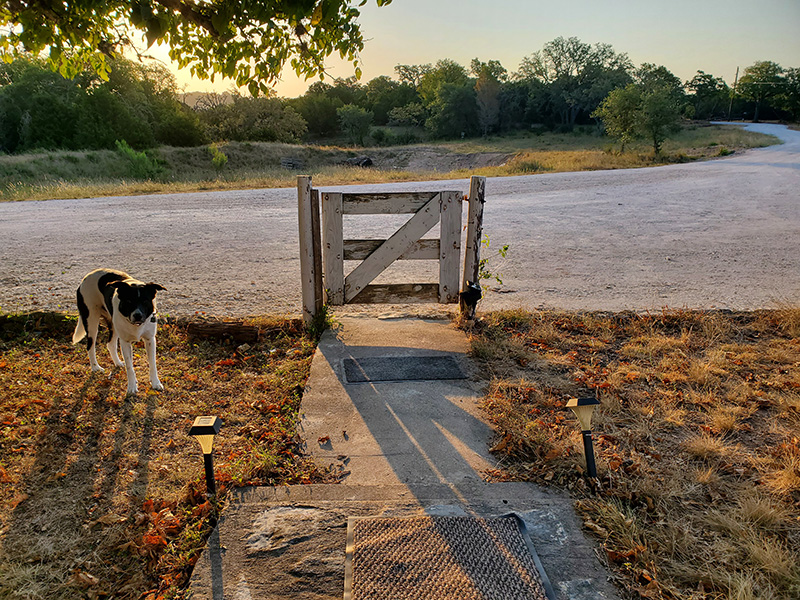 Nov 16, 2022–I’ve spent a lot of time in public places lately, staring at my feet.
Nov 16, 2022–I’ve spent a lot of time in public places lately, staring at my feet.
You see, social media users are using the phrase “touch grass” as shorthand for “put down the phone and go outside and be in nature.”
Yet many campuses, parks, and public places admonish us to “Keep off the grass.”
I single out colleges because they have a real challenge. Landscape architects are notorious for laying out sweeping arcs of sidewalk-age, forming ambitious parabolas and intricate hyperbolas complete with gazebos, fountains, and labyrinths skirting graduate fine art student sculptures. They trace lovely patterns in drone video and alumni fundraising flyers. Yet beauteous as they appear, efficient they are not.
For students who sleep late, following the geometric layout ain’t going to get you your favorite Bunsen burner in Biology Lab. Any math student knows the shortest distance from Point A to Point C doesn’t pass through Point B–you have to square that hypotenuse, baby.
Observing these current students ambulate, I notice that most respect the sidewalk layout. Even when the shortest path is across the grass, they invariable stay on the sidewalk up to the right angle, then maybe hop across the final square in order to cut the corner. The other night I was visiting with a student as we walked across campus. She faithfully followed the sidewalk, looking askance when I cut across a patch of grass to get to my truck.
I am impressed and puzzled by their level of compliance. When I was in college, we showed complete disdain for sidewalks. Maybe it was part of our counterculture in the 70s. On our Pentacrest, sidewalks formed perfect ovals, yet students all cut directly across.
Student groups placed signs designed to guilt us out of walking on the grass (“Let It Be” was one I remember). But no, they didn’t deter trespassers. By end of semester, our trails crossed the ovals, forming an ugly slash as on those DO NOT DO THINGS signs.
One school I attended built a beautiful new auditorium. In front, they installed sweeping sidewalks that reflected the graceful lines of the structure. The problem was students did not like walking in a sweeping arc when rushing to play practice. They preferred taking the direct route, meaning they bisected the arc.
The school made plodding efforts to corral students on the sidewalks. Workmen even installed blocks of limestone around the edges of the sidewalks. They were massive impediments–2 foot by 2 foot by 4-foot blocks. It seemed the guardians of learning were turning the school into a mighty fortress.
I had occasion to return recently and was amused that ground crews had given up–they graveled the entire area.
The solution to all this is really quite simple: Wait.
Yes, wait.
Once any new building is erected, wait one year to install the sidewalks. Then, simply lay the sidewalks where the paths lead.
It worked for our interstate highway system; it will work for your front yard.